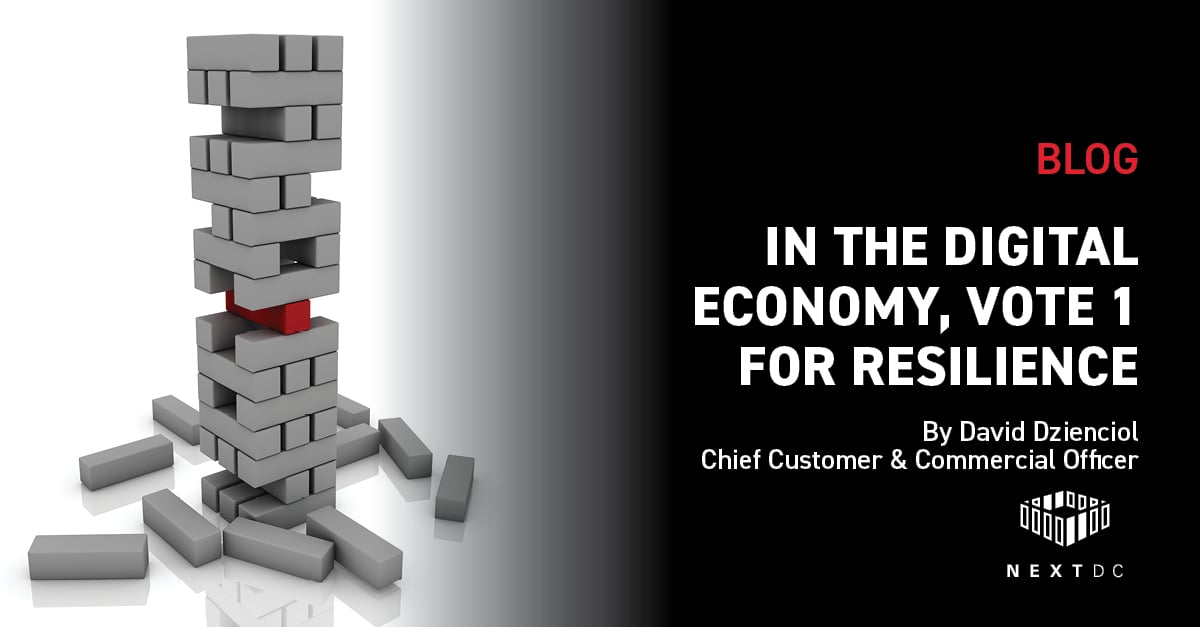By Karyn Turbill - Chief Marketing Officer
We are living in a new era, the digital era and the “age of the customer”. Digital transformation continues to drive an exciting shift; Today not only can we deliver new services to new markets more efficiently and cost effectively than ever before, it’s completely revolutionised the traditional work environment. The key enabler of digital transformation has been cloud, delivering organisations enhanced flexibility and agility to scale at speed. Secondary to cloud was the advancement of IoT and mobile. Teamed with cloud, it fuelled a ‘BYOD’ craze which brought with it a more flexible and adaptable work environment.
With the ability to tap into new markets, faster and more affordably, competition is at an all-time high. New businesses seem to pop up daily, therefore in order to compete, organisations have become more adaptable and customer-obsessed than ever - in order to meet the increasing needs of their customers and fend off the competition. As such, new age companies turned their focus toward investing in customer support and success, and recruiting new staff for more specialised roles, which is great, until it’s not great because they’ve run out of room to put everyone.

City-based real estate is a hot commodity and comes at a high price these days. With the cost of real estate in the CBD skyrocketing and the increased flexibility being delivered through the likes of cloud and IoT, office space and a fixed desk for all employees has become a ‘nice to have’ opposed to a ‘must have'.
The new way of life has encouraged organisations to capitalise on the opportunity to access any application or data, from anywhere on any device any time and shift much needed CAPEX saved on real estate and office space back to the bottom line - allowing them to reinvest important funding back in to their core capabilities. Digital transformation has rapidly changed the way we work, and there’s no sign of it slowing down. Geographic distance and physical borders have become irrelevant, whether organisations are prospecting new customers or recruiting the best people to deliver the best outcomes for their customers, the same rule applies – geography and physical location is no longer a viable barrier. Providing your people have the processes, platforms and tools to support them and empower them to perform – the rest will fall in to place.
The nature of business and our relationships has also evolved. Outsourcing and third-party agency partnerships are regular business practices today. Teams are disbursed and spread across states and countries, and as borders were dissolved, with it went the traditional 9 to 5 working day. And with cloud and mobile allowing us to move closer to our customer regardless of location, with information and applications available at our finger tips, employers now have the luxury of drawing on wider talent pools to locate the best candidates for roles, and employees are finding more productive locations to base themselves.
Today, more than 60% of employees cite that work flexibility is more important to them than extra salary. In the age of the customer, workplace diversity and flexibility - failure to embrace the new way of life not only runs the risk of productivity being severely impacted, but organisations inadvertently place a handicap on their business as they battle to recruit and retain the next generation of employees.
But with more remote workers and double, at times triple, the number of devices placing added pressure on the corporate network, how do organisations keep up with demand and support their mobile workforce, ensuring they have access to what they need and when they need it - without even the slightest change in the performance or availability of the application or data they’re requesting?
The 21st century user is no different than a consumer, our expectations are greater than they’ve ever been. In order to service our customers and perform optimally, our basic expectation is our systems, and tools will be available when we need them, from any device. So how are every day businesses keeping up with the Joneses? How do they suddenly cope with increased demand on corporate networks, applications and IT services? And how do they do it immediately, pivoting and changing gears as traffic and loads increase across the multiple peak periods?
It was only a handful of years ago that the notion of your IT infrastructure working harmoniously with a cloud and the other applications, workloads and networks and would do so cost efficiently, seemed preposterous and nothing short of a pipe dream. But fast forward to today, that pipe dream is very much reality. It’s a legitimate business practise that Australian businesses are reaping the rewards from. Architecting your IT so it sits smack bang in the centre of your network, your critical services and the best bits of each cloud that you’ve customised to suit specific business outcomes was once unfathomable. Today, it’s just business -business that colocates its critical IT infrastructure in a hyperscale data centre.
IT was once a support function of the business, but today IT is the business. Colocation, once a supporting act to IT, is now the leading part in any modern-day organisation who has dreams of scaling their business, growing their customer base and delighting their customers and users with a seamless experience. The data centre has fast become the focal point of every IT strategy, so ensuring your critical IT infrastructure sits right in the centre of the supporting platforms and critical services your business and your people rely on is not only a more cost-effective solution, it has completely revolutionised the way Australian organisations do business today.
The nature of our role evolves daily, as do the needs of our customers and continued advancements in technology. With business growing and evolving at speed, can your infrastructure do the same? We may dream big, but we work with our customers so they can too. We would love the opportunity to hear about your plans for the future and discuss how we can help you turn your dreams of a digitalised future, into reality. Get in touch and chat to one of our data centre specialists today.

